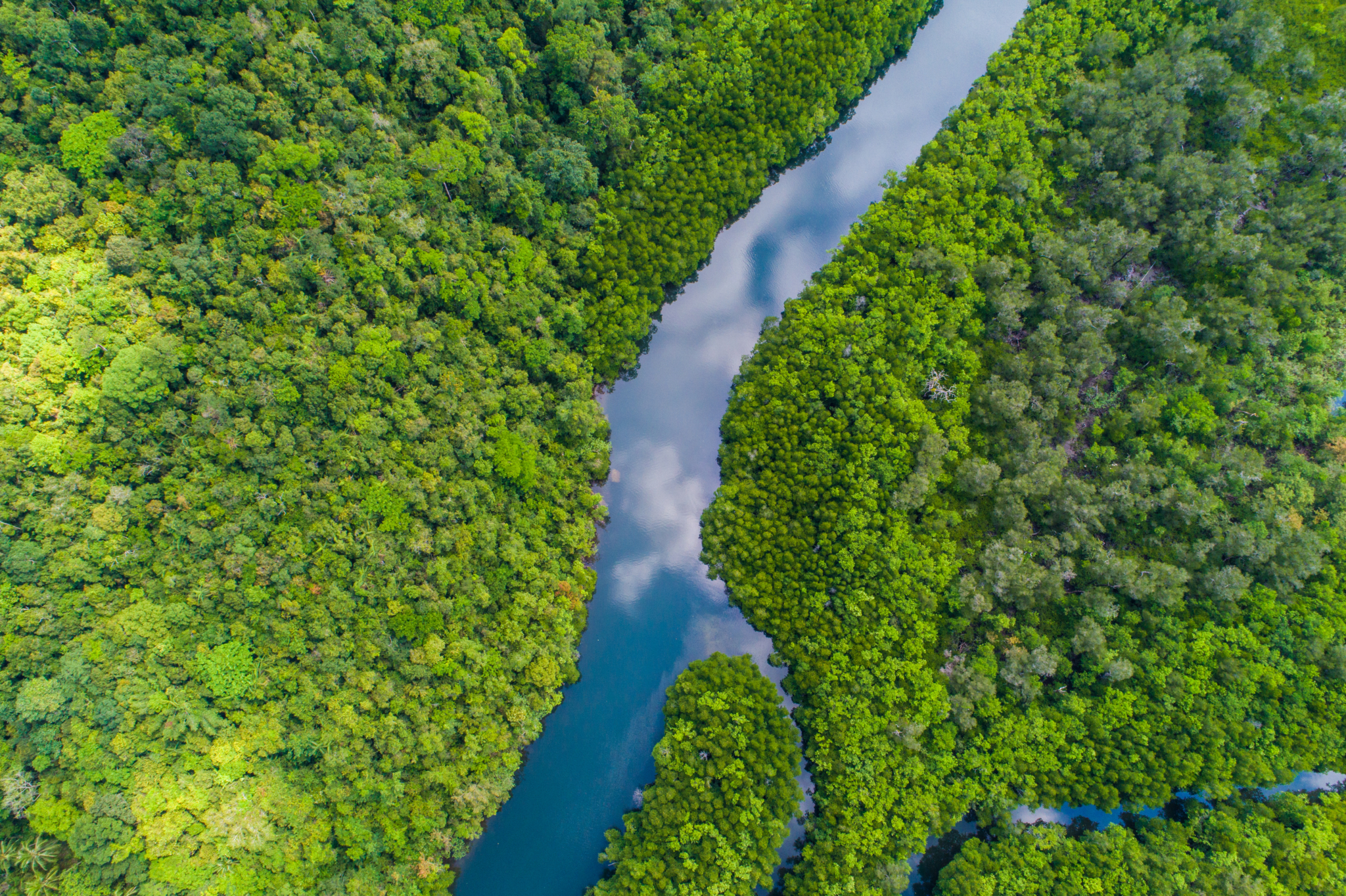Energy and civil society leaders, policymakers and industry professionals from across the globe are convening this month for the multi-week World Hydropower Congress 2021. With less than two months before the kick-off of COP26, and amidst a backdrop of accelerating climatic uncertainty, the virtual summit seeks to “showcase how sustainable hydropower is part of the solution to climate change.”
But what IS sustainable hydropower?
To begin answering this question, the International Hydropower Association (IHA) brought together industry insiders and environmental and civil society leaders to draft the San José Declaration on Sustainable Hydropower. The statement will be issued on Friday, September 24, 2021.
The declaration’s expected unequivocal stance that “going forward, the only acceptable hydropower is sustainable hydropower” that “deliver[s] net positive benefits to communities and the wider environment” will mark a milestone in the global hydropower industry’s evolution that will help maximize its contribution to combating climate change.
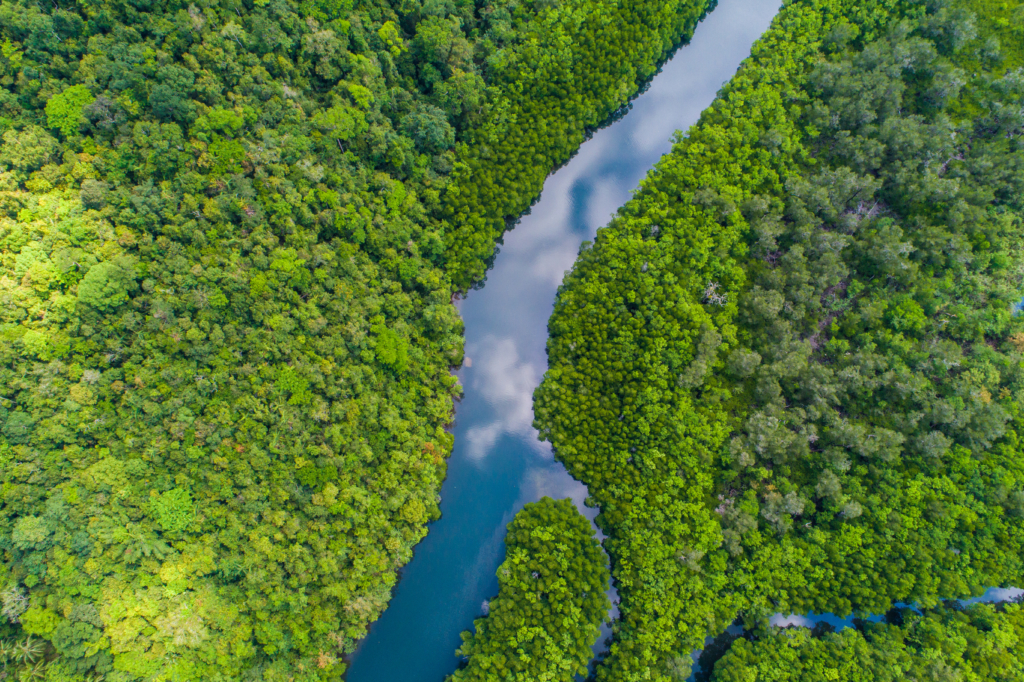
© themorningglorgy / Adobe Stock / Tropical rain forest mangrove river and green tree on island aerial view
Hydropower’s climate-resilience is ecosystem-dependent
The IHA’s effort is critically important given the unique and disproportionate role that hydropower can — and arguably must — play to mitigate climate change through the decarbonization of our electrical grids.
No other renewable energy resource can simultaneously provide the baseload AND rapid response power essential to integrating large volumes of intermittent renewables like wind and solar into our grids. Incorporating batteries and other energy storage technologies into hydro projects further magnifies the potential to provide ancillary services that support reliable grids. Hydro projects can also be designed to provide water for irrigation and consumption, enhance flood and drought control, and improve food and nutritional security through aquaculture or habitat restoration.
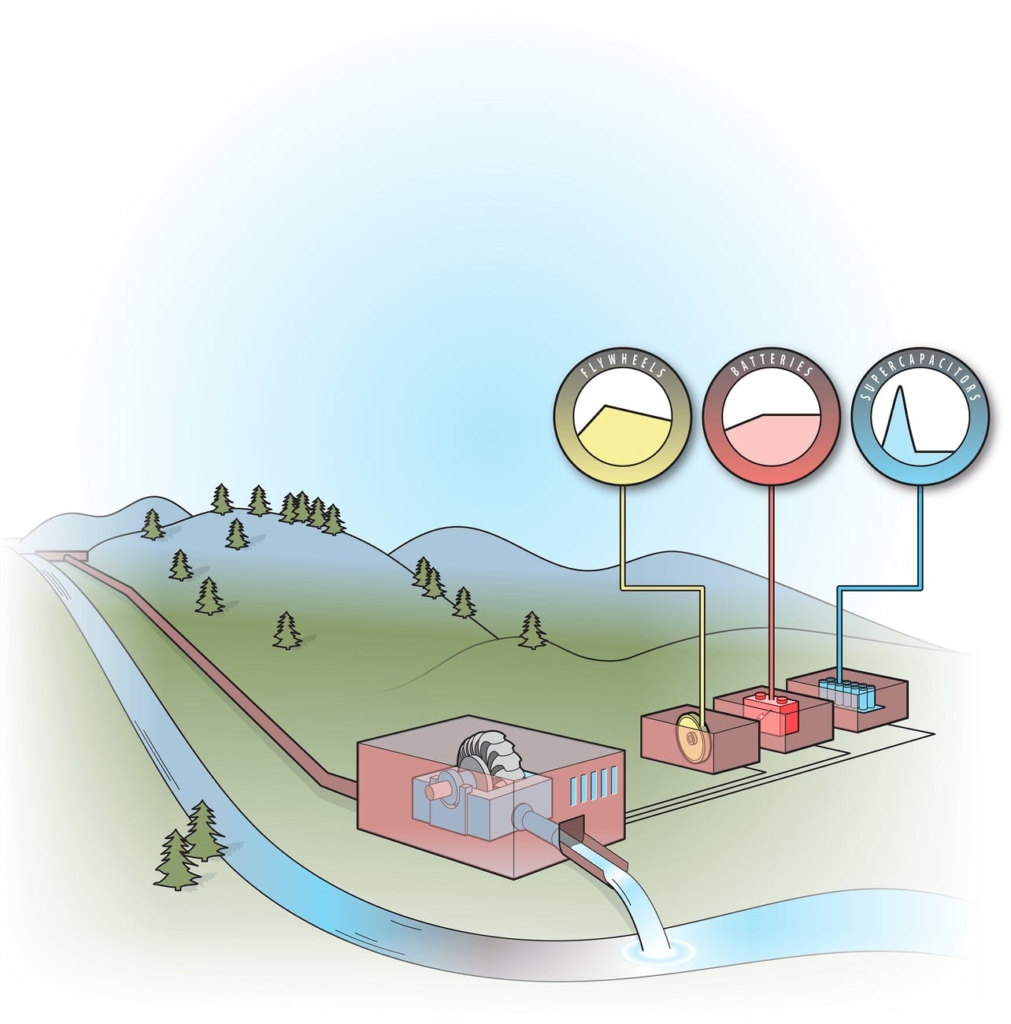
Incorporating energy storage technologies with hydropower projects can help support grid reliability. Illustration credit: Idaho National Laboratory
Hydropower is, however, also disproportionately vulnerable to climate change. In addition to the well-documented depletion of large-scale reservoirs, virtually every aspect of projects — from the size and number of turbines, to civil works designs, commercial structuring and financial returns — is optimized according to the historical flow regimes of rivers. Flow regimes are, in turn, determined by long-term precipitation patterns and the regulatory ecosystem services of upstream watersheds.
As the world warms, precipitation and weather patterns are changing. 2021’s record-breaking heat waves in the U.S. Pacific Northwest, Russia and Greece, and catastrophic flooding in New York City, Germany, Japan, New South Wales and Central China among others are the latest examples of dramatic deviations from historical norms.
At the same time, critical ecosystems within our source watersheds are disappearing at unprecedented rates. Burning since mid-July, and mid-August respectively, California’s Dixie and Caldor fires have scorched nearly 1 million acres, and the Siberian wildfires of 2021 are some of the largest fires recorded in modern history. According to the European Space Agency, wildfires now burn over 1.5 million square miles (4 million square kilometers) annually — more than twice the size of Indonesia, larger than India, and just over 40% of the landmass of mainland China.
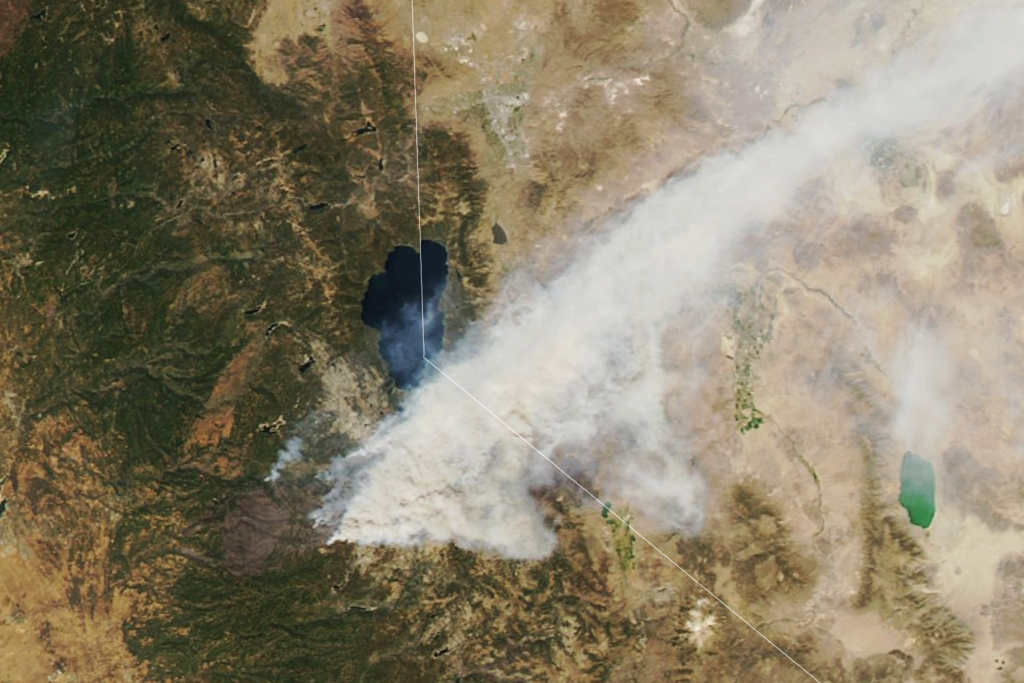
Smoke from California’s Caldor, August 30, 2021, acquired with the Moderate Resolution Imaging Spectroradiometer (MODIS) on NASA’s Aqua satellite. Photo credit: NASA
These changes to precipitation, weather patterns and watersheds threaten individual hydropower projects, as well as the hydropower industry’s broader potential to contribute to global decarbonization efforts — highlighting the need for the industry to prioritize ecosystem health alongside power generation.
Sustainable hydropower must incorporate climate adaptation strategies
To effectively address mounting climate risks, hydropower and water infrastructure projects must include scientifically-informed adaptation components that adjust ecological, social, and economic systems in response to the changing climate. The UN’s declaration of the current decade (2021-2030) as the Decade of Ecosystem Restoration and the growing body of practical knowledge on nature-based solutions confirm that the strategic conservation and restoration of source watersheds is one of the most impactful and cost-effective climate adaptation strategies available.
However, the dual crises of climate change and forest-degradation are exacerbated by the relatively small amount of funding directed toward adaptation measures such as the protection and restoration of vital natural infrastructure. Investments into climate change adaptation as well as joint adaptation and mitigation projects represented a mere 5.4% of global climate finance flows in 2017/18, while projects focused solely on mitigation attracted 93% of total flows. Significantly, US$ 337 billion — 58% of global climate finance flows — went toward new renewable energy projects.
The advantages of closing the adaptation finance gap and scaling up high-impact investments to conserve and restore source watersheds are numerous. Project sponsors can minimize their climate-related risk exposure, prolong projects’ operating lifetimes, reduce operating and maintenance costs, and increase revenue while simultaneously improving their reputation. Conservation and restoration projects can also generate employment for local community members while bolstering their long-term climate resilience and overall self-reliance.
Embracing data-driven restoration increases impact
Hydropower and water infrastructure developers can maximize the adaptive benefits of watershed restoration by prioritizing areas where the risks of soil erosion are highest, reducing unnecessary sediment flows and slowing runoff in order to protect and optimize reservoir storage. Similarly, check dams can be strategically sited to capture excess runoff during extreme precipitation events, smooth the flashiness of stream systems, accelerate groundwater recharge rates and promote long-term habitat creation.
The increasing availability of high-resolution satellite and aerial imagery makes investing in adaptive measures easy, impactful, and cost-effective, and eliminates the need for on-the-ground monitoring and evaluation services with high transaction costs — a key obstacle to financing restoration and conservation projects.
User-friendly geospatial tools like Lens, a product created by Upstream Tech, enable project sponsors, civil society actors, and communities to collaborate with greater transparency to plan, implement, and monitor mutually-beneficial restoration and conservation activities in near real-time and at landscape scale. By visually communicating project outcomes and empowering stakeholders to verify and validate project impacts, organizations like Upstream are helping to create a virtuous cycle of funding for projects with proven impacts.
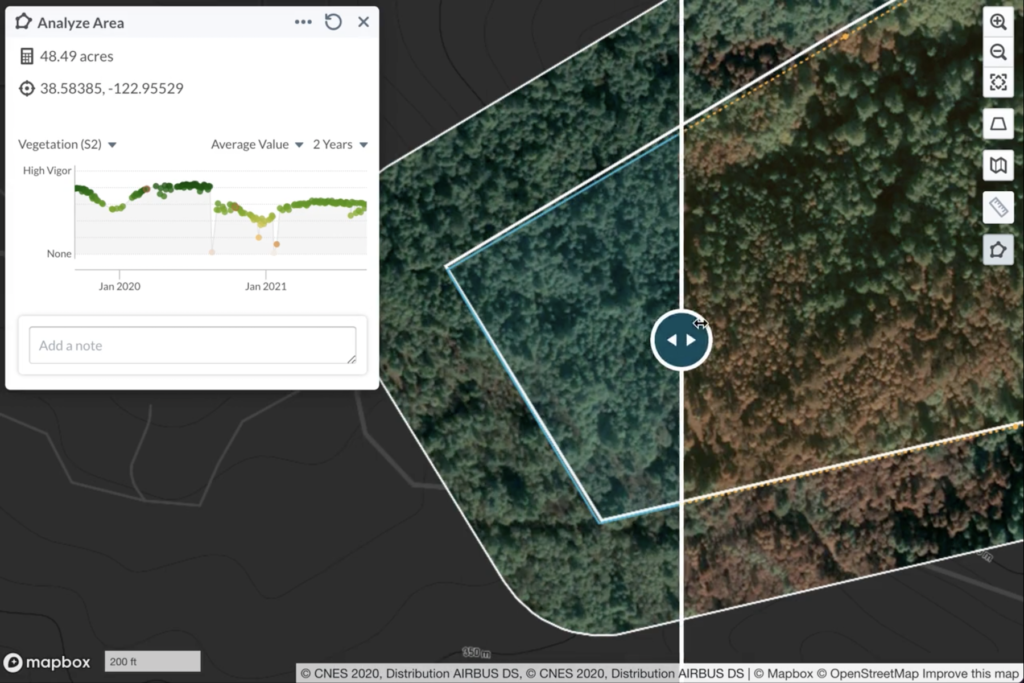
Monitoring tools like Lens support data-driven conservation planning. Photo credit: Upstream Tech’s Lens displaying imagery from Airbus, 2020
When hydropower developers invest in data-informed restoration and conservation projects with measurable results, governments and other stakeholders can also leverage these efforts to attract additional capital flows into complementary initiatives. Sustainable hydropower projects that are designed and implemented collaboratively with communities and conservation organizations can therefore become catalysts for broader landscape restoration.
Collaborative, landscape-scale restoration enables truly sustainable hydropower
Hydropower’s sustainability hinges on the industry’s ability to identify and enact proactive adaptation strategies, and collaboration is the linchpin of effective climate change adaptation. Developers, conservation and civil society organizations, communities, governments, and financiers must work hand-in-hand to conserve and restore ecosystems — enabling hydropower that is both sustainable and sustaining.
The San José Declaration on Sustainable Hydropower is an important and timely example of authentic collaboration across diverse stakeholder groups. As the World Hydropower Congress concludes this week, organizers will incorporate additional feedback collected during the virtual summit before releasing a final draft of the declaration. While adaptive measures like landscape-scale restoration are not currently highlighted in the declaration, the collaborative effort to draft a foundational set of guidelines has already demonstrated the strength of the collective will to create a sustainable future for hydropower.



